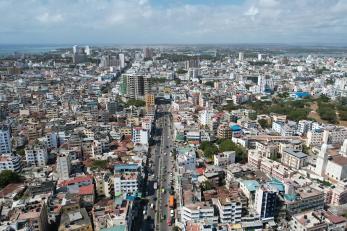From High-Risk to Resilient
The Role of Social and Economic Interventions in Reducing Vulnerability to Violent Extremism in Kenya

Kenya has made significant progress in developing structures and strategies for reducing violent extremism. However, it is still one of East Africa’s most vulnerable countries when it comes to home-grown violent extremism and recruitment into violent extremist organizations (VEOs). This is largely because extremist groups capitalize on local grievances and vulnerabilities to spread and justify their ideology and worldview as well as recruit at-risk individuals. As recruitment into VEOs continues to stoke conflict and instability around the world, governments and peacebuilding actors continue to prioritize preventing and countering violent extremism (P/CVE) efforts and programs as part of a larger violence prevention strategy. Despite an increasing number of studies that have evaluated the impact of these P/CVE interventions, there is still a significant need to understand “what works” in these programs. The evidence gaps are especially pronounced in programs that seek to reduce vulnerability of those who are most at risk of radicalization or recruitment into VEOs.
This research report uses data from Mercy Corps’ Collective Resilience Against Extremism (CREATE) program to help fill two key evidence gaps:
- What matters for reducing vulnerability to VEO recruitment, and
- What activities and approaches are most effective in increasing resilience among the highest-risk individuals.
We used pre- and post-assessment surveys from participants—identified as high-risk—in CREATE’s program activities in four counties in coastal Kenya (Kwale, Mombasa, Kilifi, and Lamu) to collect data on five key indicators of individual resilience to VE recruitment and participants’ attitudes towards the use of violence. We also employed analysis of qualitative data, drawing on open-ended qualitative responses from participants. We found that:
- On average, after participating in CREATE’s program activities, participants reported improvement across five dimensions of resilience: diverse social networks, skills and livelihood opportunities, sense of agency, sense of their position in society, and participation in governance processes.
- Improvements in these dimensions were also associated with reduced vulnerability to violent extremism, with diversity of social networks and sense of agency having the strongest relationship to reduced support for violence.
- Finally, participating in CREATE activities was associated with a 22% reduction in the likelihood of justifying the use of violence.
These findings suggest that programs that seek to make deep and substantial gains among some of the highest risk populations can be successful in reducing vulnerability to VEO recruitment. They also point to the importance of social networks and sense of agency, the need for personalized and carefully sequenced approaches, and interventions designed to change norms and attitudes in reducing support for violence and vulnerability to VEOs even among high risk individuals.


